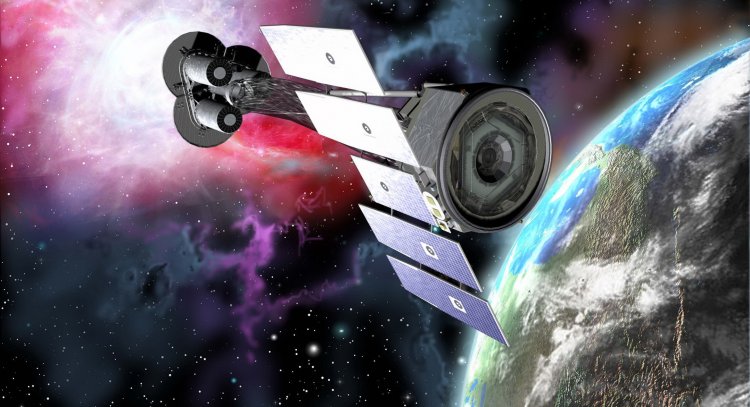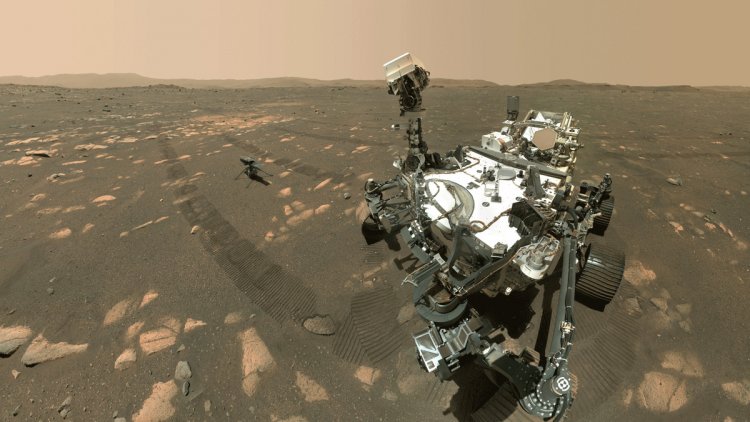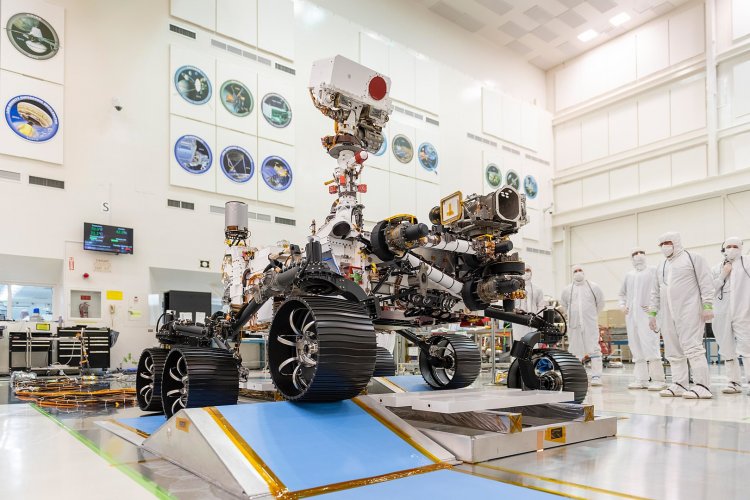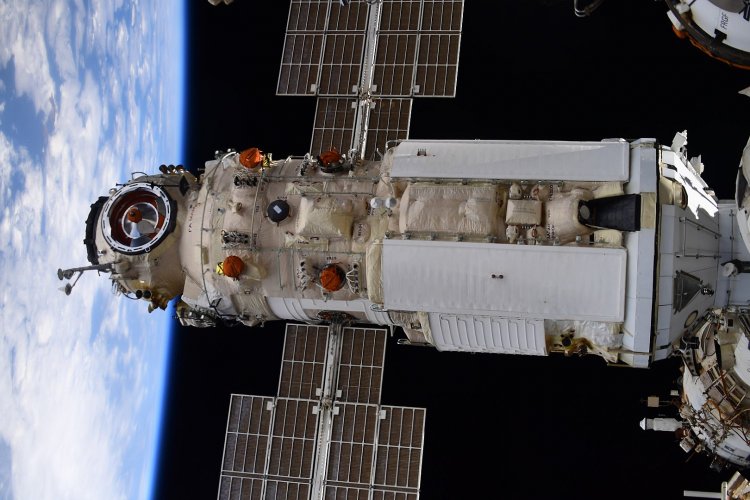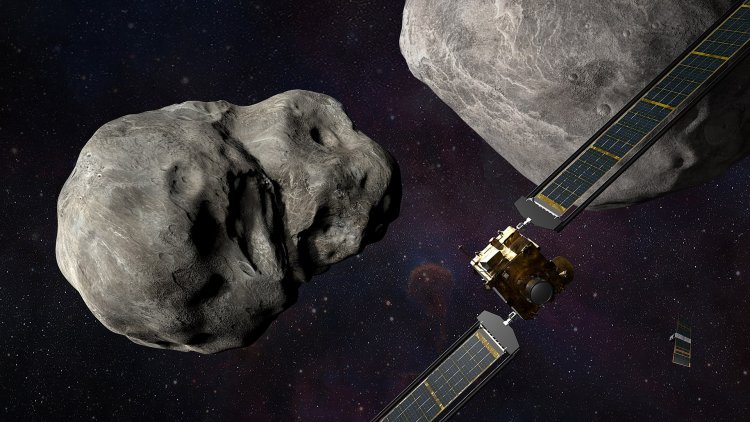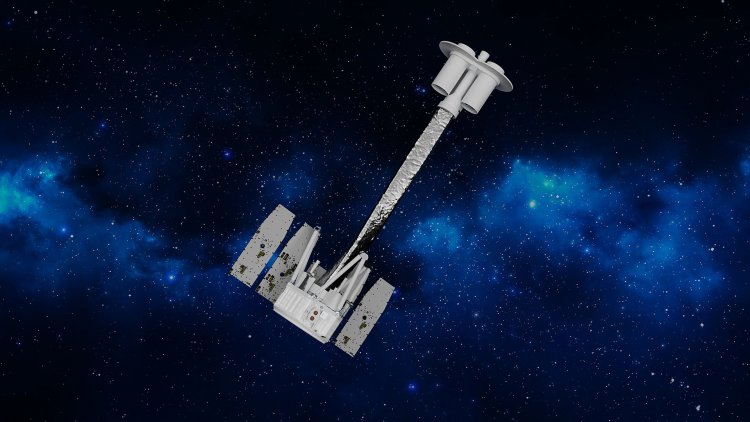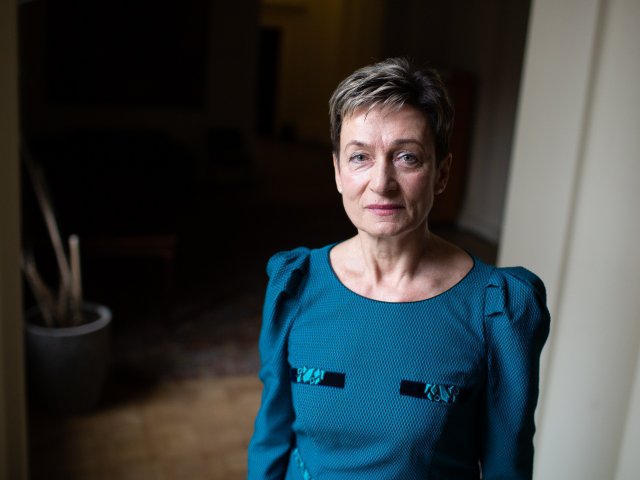In 2021, the whole world has cheered up – vaccination campaign has started in many countries, while the society is gradually getting back to normal life. Though we continue to wear masks, we still want to believe that it will soon go back to the way it was.
The past several years have become a busy season for medical scientists, biologists, chemists, virologists, and immunologists. However, this period has become equally busy for astronomers, cosmonauts and astronauts, as well as managers of major domestic and foreign space projects. Despite the existing difficulties and coronavirus twists and turns, many projects have been implemented on schedule. It means that the mankind will learn more about the workings of the universe and our own possibility of staying in outer space in the years to come. Let us recall the main space research highlights of the year.
"PERSISTENT" MARS ROVER
The year of 2021 has become a new milestone in the process of studying the Red Planet. On February 18, American automatic interplanetary station with Perseverance rover and Ingenuity helicopter on board made a soft landing on Mars. Thus, Perseverance has joined the ranks of Mars automatic residents – pioneers and explorers.
Selfie of Perseverance with Ingenuity in Ezero Crater on Mars, April 7, 2021
The work is performed in Jezero Crater on Mars. According to the scientists, this place was the delta of the river flowing into a large lake in the past. So the traces of life might have remained in the rocks of this crater.
The Mars rover will look for the signs of ancient microbial life with the help of cutting-edge equipment: a drill, instruments for chemical and mineralogical soil analysis, x-ray spectrometer with thermal imager, ultraviolet spectrometer for detecting organic matter, video cameras, robotic arm, etc. No wonder that this set of equipment, as well as weight of 1,025 kg and dimensions (length and width) of about 3x3 meters, allow one to consider Perseverance the largest planet rover in the world.
"Speaking in school language, we can say that Perseverance is the most advanced Mars rover, superior to all of its predecessors. The importance of this event is tremendous, because, among other things, the rover was landed on a new site – a crater that had been a lake in the past. Looking from the orbit, one can assume that it is possible to find traces of life there. It may manage to find various sediments providing the evidence of Mars having been a habitable planet before,” Maxim Leonidovich Litvak, professor of RAS, head of neutron and gamma spectroscopy laboratory, Department of Nuclear Planetology, Space Research Institute of RAS, told Scientific Russia.
Perseverance in Jet Propulsion Laboratory (17.12.2019)
Along with their main mission – looking for the traces of life on Mars – the participants to the project will make experiments devoted to producing oxygen from carbon dioxide. According to the mission schedule, Perseverance will work on the Red Planet for 687 terrestrial days.
Explore Mars' Jezero Crater with NASA’s Perseverance Rover. Sorce: NASA Jet Propulsion Laboratory
"NAUKA" ON ISS
The launch and coupling of new ISS module Nauka (science) has become the main event for domestic space industry. It looks symbolic that the launch took place in 2021 which was declared the Year of Science and Technologies in Russia.
The module has an interesting story of creation. Back in 1998, it was being built as a backup copy of Zarya (dawn) Functional Cargo Block (FCB). The launch of Zarya was successful, so the scientists decided to modify the backup module transforming it into a multipurpose laboratory for the Russian segment of ISS. Today, Nauka is equipped with the latest technologies.
Multifunctional Laboratory Module Nauka docked to ISS
Nauka is the fourth research module of ISS. It has joined the ranks of American lab module Destiny, European Columbus and Japanese Kibo. On estimation, the new Russian module has increased the working capacity of Russian ISS segment by one third and will raise the number of experiments made on ISS more than twice.
It is important that the launch and coupling of a new module will provide a special place for experiments on board the ISS for Russian cosmonauts. Before, the research was carried out in Zvezda (star) Service Module, where the cosmonauts performed service operations and went in for physical training. Nauka will allow for not only raising the quality of research, but increasing the crew of Russian segment as well.
Tour of the International Space Station: Nauka Module. Source: Roscosmos Media
CAMERA! ACTION! ISS
In October 2021 the public attention was focused on the launch of piloted Soyuz MS-19 spacecraft with the first movie crew in the world on board. Cosmonaut Anton Shkaplerov, Hero of Russia, film director Klim Shipenko and actress Yulia Peresild started for ISS on October 5 for filming a movie Vyzov (The Challenge) and returned to the Earth on October 17 with the footage.
The film story says that a female physician (Yulia Peresild) is urgently trained for a flight to ISS and sent to the space station for rendering medical aid to one of the cosmonauts. Actually, it is not only a movie project, but a scientific experiment as well: the members of the crew were getting ready for the flight in just 4 months instead of many years. In future, the space flights may become accessible for the majority of those interested, while urgent training program will allow for sending to orbit real physicians.
The story of the first movie crew. Source: Roscosmos Media
8 MONTHS IN SECLUSION FOR THE SAKE OF SCIENCE
The participants to project SIRIUS (Scientific International Research In Unique Terrestrial Station) will spend 8 months in seclusion. The 3rd stage of the project – 240-day-long isolation experiment – started on November 4, 2021. This experiment will model the main conditions of prospective interplanetary expedition. The participants to the project will go beyond the Earth’s orbit, perform a flight to a conditional planet with subsequent orbital flyby for choosing the place of landing, and planetary landing of expedition module for carrying out scientific research. Then, they are to perform operations on receiving transport spaceships on the orbit and remote control over robotic equipment for building a base on the Moon. After having completed the mission’s program, they will come back to the Earth.
Crew of SIRIUS-21 mission
Interplanetary isolation analogue project SIRIUS includes a series of several joint research modelling experiments with duration of 17, 120, 240 and 360 days. The scenario of SIRIUS-21 mission is based, among other things, on the research program studying the impact of isolation in a confined space on human psychology and physiology, as well as relationships in a small group. The mission crew consisted of three men and three women from Russia, USA and UAE (media reported that one of the female participants had left the project due to arm injury). The crew includes the commander, flight engineer, three researchers and a physician. Oleg Blinov, head of division for creating integrated simulators of prospective transport spaceships at the Gagarin Cosmonaut Training Center, was nominated the expedition leader.
According to the scenario, the group is now approaching the lunar orbit, so the communication delay is growing to 5 minutes one way. The crew members are performing regular operations on preparing the landing module, drilling the elements of out-of-craft activities, as well as carrying out the control over robotic equipment on lunar surface.
Start of the 3rd stage of the project – 240-day-long isolation experiment. Source: Roscosmos TV
A STRIKE AT THE VERY HEART OF... AN ASTEROID
On November 23, DART spacecraft was launched into space. In the course of DART mission the scientists will test the technology of kinetic strike at a celestial object that may potentially come into collision with the Earth. A sort of story about David and Goliath unfolding in outer space!
The Double Asteroid Redirection Test (DART), which will help determine if intentionally crashing a spacecraft into an asteroid is an effective way to change its course, is scheduled to launch no earlier than 1:21 a.m. EST Wednesday, Nov. 24 (10:21 p.m. PST Tuesday, Nov. 23) on a SpaceX Falcon 9 rocket from Vandenberg Space Force Base in California. This illustration is of the DART spacecraft and the Italian Space Agency’s (ASI) LICIACube prior to impact at the Didymos binary system. DART is the agency’s first planetary defense test mission and the target asteroid is not a threat to Earth
The participants to the mission chose binary asteroid Didymos discovered in 1996 as the target. It is a system consisting of Didymos primary body 780 meters across and moonlet Dimorphos 160 meters in size. According to the scientists, the chosen asteroid poses no threat to the Earth. Even in case of changes in its trajectory, the asteroid will not come close to our planet.
Under the plan, the spacecraft is to approach Didymos in late September 2022 and strike it as a battering ram on October 2. The event can be watched from the Earth with the help of terrestrial telescopes. As Dimorphos is moving either in front of or behind Didymos at times, the scientists can identify whether the orbit of Dimorphos has changed after the collision with DART by way of tracing the changes in brightness of small asteroid.
Behind the Spacecraft: NASA's DART, the Double Asteroid Redirection Test. Source: NASA
IXPE WILL TELL WHAT IS INSIDE NEUTRON STARS AND HOW FAST BLACK HOLES ARE ROTATING
In December 2021, the first of its kind space X-ray observatory IXPE (Imaging X-ray Polarimetry Explorer) was launched for studying the polarized X-ray radiation. The mission is aimed at studying the most complex objects of the universe: neutron stars (pulsars and magnetars) and black holes. The participants to the mission hope that the data obtained will tell us more about the true nature of space X-ray radiation sources.
NASA's Imaging X-ray Polarimetry Explorer (IXPE) mission is the first satellite dedicated to measuring the polarization of X-rays from a variety of cosmic sources, such as black holes and neutron stars
Prior to that, the astrophysicists have had no opportunities for studying the polarized X-ray radiation, while it can provide a lot of new information about the structure of the Universe. Analyzing the polarized X-ray radiation with the help of IXPE observatory, the scientists will learn many new things about the structure and behavior of space objects and their environment, as well as the physics of X-rays occurrence.
The scientists of the Space Research Institute of RAS take part in this project. The first scientific observations will be carried out as early as in January 2022 after the necessary checks aimed at testing the functions of equipment.
Meet NASA’s Newest Set of X-ray Eyes on the Universe. Source: NASA's Marshall Space Flight Center
The Scientific Russia portal will continue guiding you through activities of Russian and foreign scientists and update you on their successes next year as well!
